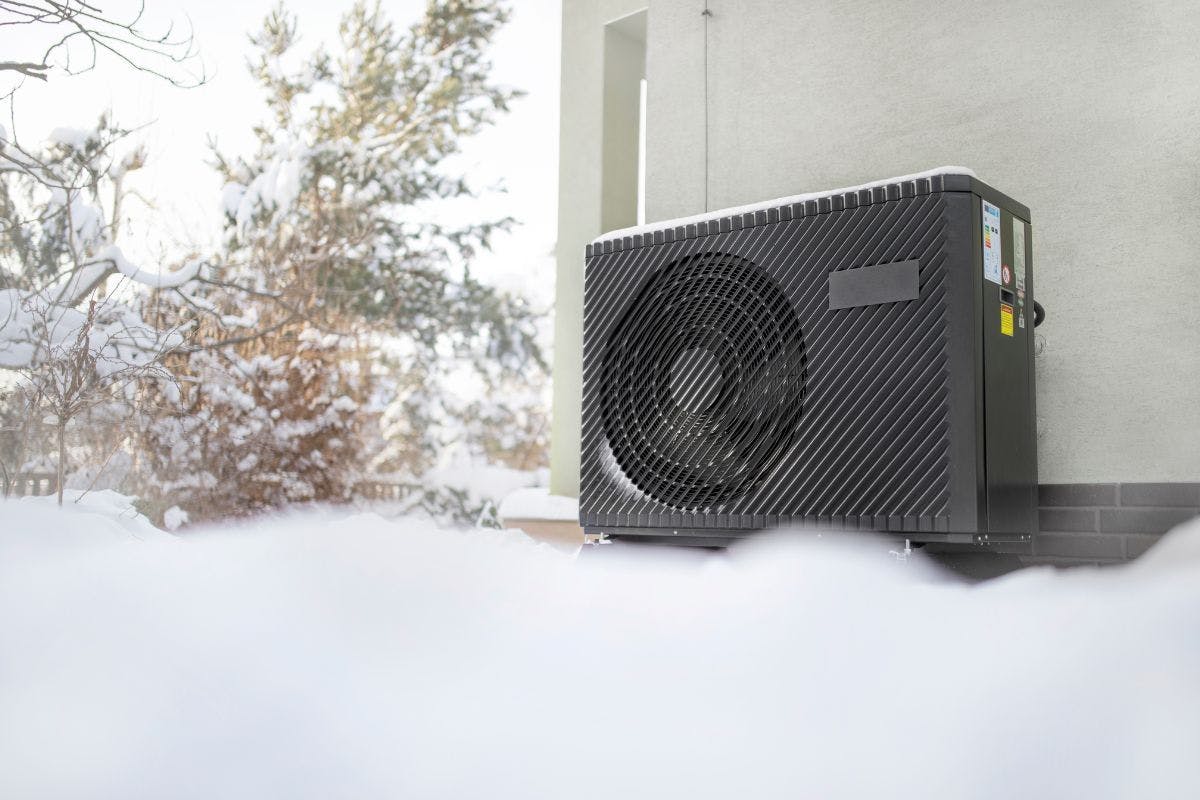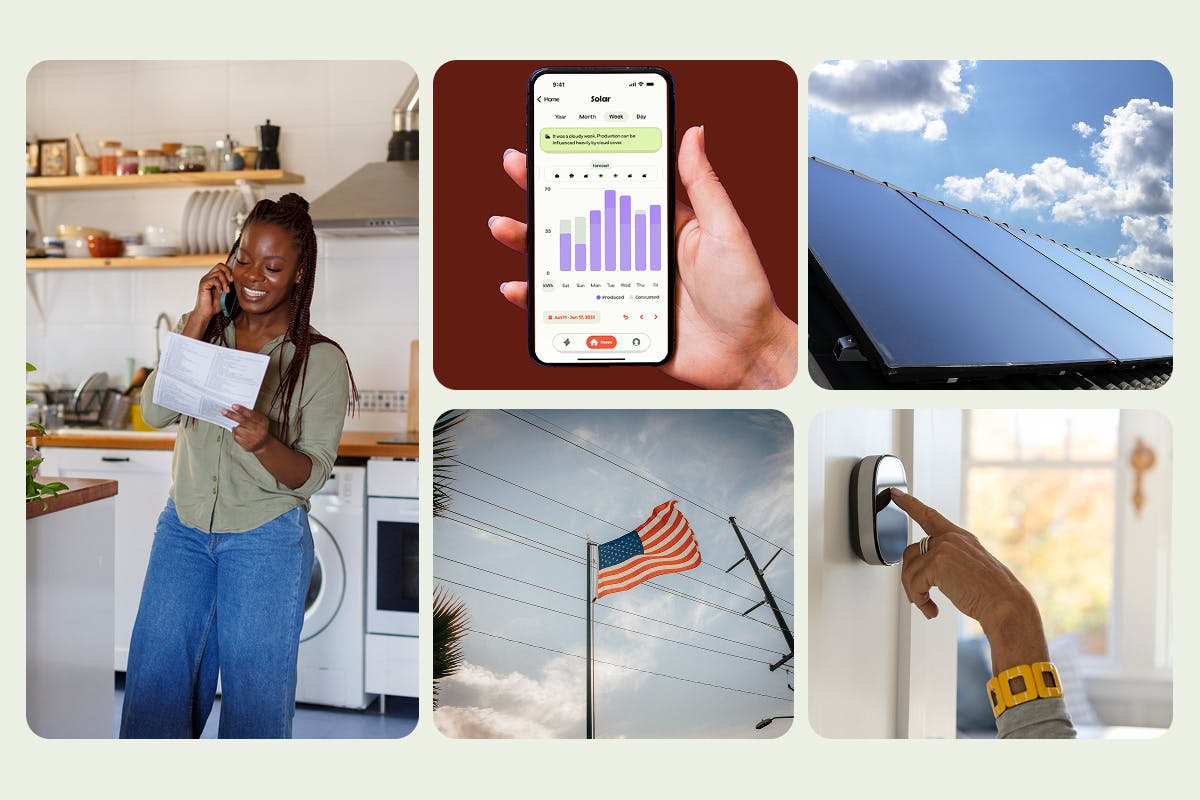Cold Climate Heat Pumps: Do Heat Pumps Work in the Cold?
Last edited

Author
Andrew Giermak
Solar and Electrification Writer and Editor

Editor
Andrew Blok
Electrification and Solar Writer and Editor

If you live in an area with harsh winters, you may think heat pumps can't handle the cold. But that’s no longer true. Once considered only suitable for mild regions, heat pumps are in use in all 50 states.
This shift is due to technological advancements in cold climate heat pumps. Energy-efficient heat pumps utilize features like variable-speed compressors and enhanced defrosting to work efficiently even when temperatures drop well below freezing. For homeowners seeking an energy-efficient, two-in-one heating and cooling solution, our guide explains how these new, advanced heat pumps work.
See how much you can save with a new HVAC system from Palmetto
Heat pumps are widely installed in challenging climates
Heat pumps are two-in-one heating and cooling systems growing in popularity. Data from the Rocky Mountain Institute shows annual heat pump sales in the US increased 115% from 2004-24. Air-source heat pumps used for space heating systems have gone from 34% to 57% of all space heating equipment sold in that span.
Heat pumps are in use in all 50 US states, so heat pumps work well in the hottest summers and all but the coldest, most Arctic, winters.
In 2022, more heat pumps were installed, about 4.3 million, than gas furnaces, about 3.9 million, in the US for the first time. Heat pumps outsold furnaces in 2023 and 2024, reaching 32% more heat pumps in 2024 according to Canary Media.
New York and Maine, certainly states with rough winters, are big contributors to that shift. In New York, there were 37% more heat pumps installed in 2022 than in 2021.
In Maine, the state government’s 2019 Climate Action Plan set a goal of installing 100,000 heat pumps by 2025. Maine hit the 100,000 mark in 2023 and is now moving toward 275,000 new heat pumps by 2027.
The challenge of cold climates
For years, cold climates were a problem for heat pumps, but technological advances mean that those challenges are less of a concern.
Heat pumps don’t generate heat, they move it between your house and the outside air or ground. They move heat outside to cool your house and move it inside to heat it.
When it’s really cold outside and you most need to heat your home, there’s less heat to pull inside, which meant a heat pump had to work harder, if it could keep up at all. Defrosting the outdoor coil, which can ice over with precipitation or humid conditions, takes additional energy and eats into a heat pump’s efficiency advantage over other heaters.
However, today’s cold climate heat pumps are better than ever at dealing with these challenges.
Cold climate heat pumps handle harsh weather
In regions where winter weather regularly means temps below freezing and even near zero, Energy Star-certified cold climate heat pumps can keep a home warm.
Cold climate heat pumps are recommended by the Department of Energy in climate zone 5 and higher (as defined by ASHRAE/IECC, the American Society of Heating, Refrigeration, and Air Conditioning Engineers/International Energy Conservation Code).
Cold climate heat pumps work efficiently to 5 °F or colder, some to as low as -20 °F. Cold climate models generally have features such as variable speed compressors, enhanced defrosting, and vapor injection. A supplemental heating source, such as electric resistance heating, may be useful as an additional heat source in very cold conditions.
Compared to fossil fuel-burning furnaces, cold climate heat pumps generate fewer greenhouse gases and other harmful air pollution.
Cold climate heat pumps can also be ductless mini-split heat pumps.
Credit: Energy.gov Office of Energy Efficiency and Renewable Energy
Variable speed compressors
Some heat pumps, like furnaces, have only two speeds, on or off. Newer variable speed heat pumps can adjust how hard they run based on how much heating or cooling they need to do. This makes them more efficient at all temperatures, including at really low ones.
Vapor injection
Vapor injection adds more refrigerant into the compressing stage of the cycle for more heat transfer.
Enhanced defrosting
In cold and humid conditions, a heat pump’s outside coil gets very cold as the system extracts heat from the outside air. With the humidity, the coil can freeze. The heat pump runs a defrost cycle to remove the ice.
A heat pump with enhanced defrosting has sensors and automatically defrosts when needed, keeping coils clear and avoiding unneeded, inefficient defrosting cycles.
Auxiliary heat
Cold climate heat pumps often come with an auxiliary heat component, like electric resistance heat strips. If the outside temperature gets so low that even your cold climate heat pump can’t extract enough heat from it, the auxiliary heat kicks on. Auxiliary heat is less efficient than the heat pump technology, but can get you through extremely cold temperatures.
See how much you can save with a new HVAC system from Palmetto
Smarter heat pumps
According to preliminary results from National Renewable Energy Laboratory research, software can improve cold climate heat pump performance. By optimizing the defrost cycle of a heat pump, researchers were able to achieve a coefficient of performance (COP) greater than one down to -35 °F. That means the heat pump would be more efficient than electric resistance heating at those frigid temperatures. Overall the heat pump’s COP was 50% better thanks to the software intervention.
Zoned heating (and cooling)
Zoned or targeted heating and cooling lets you reduce energy usage by running your heating and cooling where you need it and keeping it off or limited in areas of the house you don’t need it in.
The Department of Energy estimates ducted systems can lose about 30% of energy in the ductwork, so zoned heating and cooling can eliminate this energy loss.
Are cold climate heat pumps actually better?
If you live where a cold climate heat pump is recommended, you’re likely to see better heating capacity in lower temperatures, lower energy usage (and your utility bills), and no or little need for a secondary heating system.
If you live in a moderate or warmer climate, you are unlikely to need a cold climate heat pump. The higher upfront expense and additional features won’t be worth it.
Geothermal heat pumps: A cold climate champion?
Geothermal heat pumps use the steady temperature just below ground, most of the time 50-59 °F, to give highly efficient and consistent heating and cooling. Even when temperatures are frigid above ground, heat pumps can easily grab heat from below ground.
Geothermal heat pumps won’t be affected by snow or ice.
Adapted from: energy.gov
Geothermal heat pumps are more expensive to install than their air source counterparts and require adequate land to install the underground coil, but are much more efficient and longer lasting.
One of the largest geothermal heat pumps in the world saves Colorado Mesa University $1.5 million in annual heating and cooling costs, according to the International Ground Source Heat Pump Association. A retrofitted farm house in Iowa reduced the owners' heating and cooling costs by 70%.
Climate's influence on heat pump sizing and efficiency ratings
Your area’s climate is one important factor in figuring out the correct size and efficiency ratings for a new residential heat pump. Here’s an explanation of some terms and acronyms you’ll see.
Balancing heating and cooling needs by climate
Since a heat pump handles both heating and cooling, balancing the two is key to designing an efficient system that keeps your home comfortable.
You can get a general idea of the proper size by looking at your home’s square footage and insulation and your area’s climate, but a professional can do a more accurate calculation.
An oversized heat pump will short cycle, or cycle on and off more than is efficient, leading to more wear on a system. An undersized system will have to run harder for longer and may not keep your home comfortable.
Understanding climate-specific efficiency ratings (SEER2, HSPF2)
Seasonal energy efficiency ratio 2 or SEER2 is a ratio of how efficiently a heat pump converts electricity into cooling output. It is seasonal because it tests output from 65-104 degrees, the range a system is likely to operate in.
Heating seasonal performance factor 2 or HSPF2 is similar to SEER2 but measures a heat pump’s heating output. For SEER2 and HSPF2, a higher rating means the heat pump gets more heating or cooling for the electricity put in.
You’ll probably have to pay more for a more efficient heat pump. The best advice is to get the ratings recommended for your zone or region, rather than go to the highest possible SEER2 or HSPF2 you can buy.
The estimated efficiency increase in relation to a SEER2 or HSPF2 rating is proportional. For instance, assuming equal conditions, a 8.5 HSPF2 unit will be 13.3% more efficient than a 7.5 HSPF2 when heating. The heating demand, and length of the usual heating season, makes the efficiency gained with a higher HSPF2 more valuable (and SEER2 in areas that need more cooling).
Heating degree days
Heating degree days is a calculation representing the amount of heating needed in a typical year. The calculation combines the length of time a given place is 65 °F or cooler and how many degrees lower than 65 the area it is.
| Sample of heating degree days from July 1, 2024-June 1, 2025 | |
|---|---|
| City | Number of heating degree days |
| Honolulu | 0 |
| Miami | 46 |
| San Francisco | 2,328 |
| Charlotte | 2,614 |
| New York City | 4,097 |
| Minneapolis | 6,654 |
| Barrow, Alaska | 16,378 |
Source: NOAA.gov
Professional assessment: Tailoring heat pumps to your climate
A home’s heating and cooling needs will be different in Bismarck, North Dakota compared to Key West, Florida. An experienced pro in your area should be able to answer all your questions about climate and the system that fits what you need.
Along with the experience of handling many jobs in your area, a professional will be able to do tasks such as a manual J load calculation. This calculation factors climate specifics like humidity and the average summer highs and winter lows with specifics of your property like your home’s orientation, solar gain, internal heat gain, and heat loss through spaces like windows or the ceiling.
You can achieve greater energy efficiency, and savings, by powering the ideal heat pump for your home with clean, inexpensive electricity from home solar panels. With solar, it’s possible to run your home heating and cooling, and all your electric appliances, on renewable and independent solar power.
One more way to save money is by downloading and starting your account on the new Palmetto app. You can also learn more about what you could save with Palmetto’s solar savings tool and our Savings Maximizer tool.
See how much you can save with a new HVAC system from Palmetto
Frequently asked questions
Does climate matter for picking the right heat pump?
Climate is an important factor of many in deciding on the right heat pump for your home.
Will a heat pump work in my climate?
Modern heat pumps work and give users better energy efficiency and comfort in a wider range of climates than ever. Cold climate heat pumps are built and tested to work, be durable, and maintain efficiency in temperatures well below freezing.
Can you use heat pumps for cold climates instead of furnaces?
In the vast majority of winter climates, it’s now possible and more efficient to use a heat pump for home heating rather than a furnace.
What is a heat pump lease?
When you lease a heat pump, like with the Palmetto Comfort Plan, you make predictable monthly payments, and the leasing company installs and maintains a heat pump at your house. You don't own the heat pump, so you don't ever buy it. This removes your upfront and maintenance costs.




